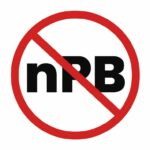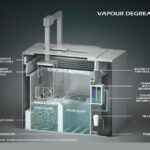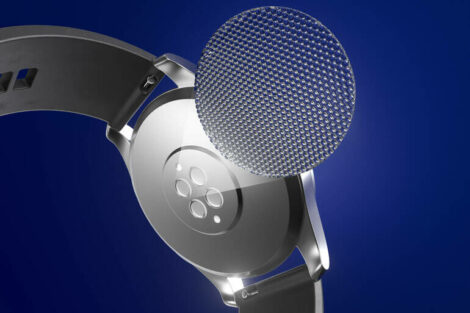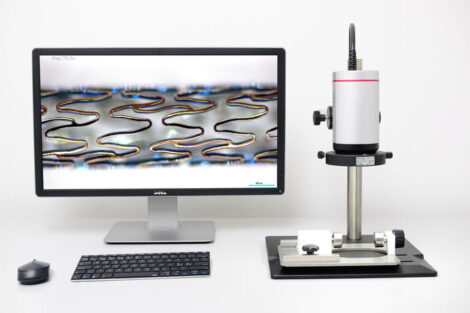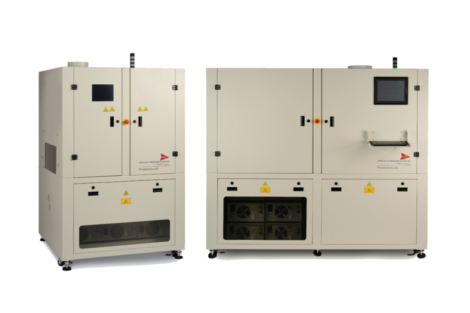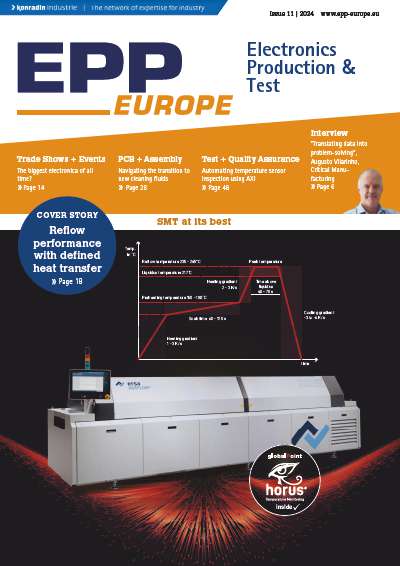The discontinuation of older vapour degreasing solvents stems from mounting environmental concerns and tightening regulations. Solvents including n-propyl bromide (nPB), perchloroethylene (Perc), trichloroethylene (TCE), and 3M Novec specialty fluids have been widely used for their effectiveness in electronics parts cleaning. However, questionable substances found in their formulations are raising concerns related to air and water quality and are casting a shadow over their usage.
Urgency for change
The transition to a new vapour degreasing fluid is not just a compliance measure but a strategic necessity for electronics manufacturers. Selecting and qualifying the right replacement fluid takes time, and early preparation is crucial to avoid future supply disruptions. With the unpredictable nature of supply chains, waiting until supplies of your current solvent start to dwindle could lead to costly delays and interruptions in production. By planning your transition early, you can ensure a continuous, uninterrupted supply of cleaning fluids, avoiding the pitfalls of import delays and product scarcity. This proactive approach not only safeguards your manufacturing processes but also positions your operation to adapt swiftly to industry changes and regulatory updates.
The rise of alternatives
Transitioning from discontinued cleaning fluids requires identifying alternatives that meet performance benchmarks. Fortunately, cleaning fluid manufacturers have responded proactively, developing vapour degreasing fluids that are more eco-friendly. Importantly, these modern vapour degreasing fluids offer comparable or superior cleaning efficacy to minimise any production disruptions.
Modern cleaning fluids
Vapour degreasing is a highly efficient cleaning process used in manufacturing to remove contaminants like oils, greases, and fluxes. This method offers significant benefits over traditional aqueous cleaning systems due to its effectiveness, speed, and lower environmental impact.
The process of vapour degreasing works on a simple yet powerful principle. It utilises a specialised cleaning fluid in a sealed vapour degreaser machine. The machine heats the fluid until it vaporises, forming a dense cloud of fluid vapour. Parts are suspended in or passed through this vapour cloud. The vapour condenses on the cooler parts, dissolving and washing away contaminants. The cleaning fluid drips off the parts, taking dirt and flux with it, and then drains back into a heated sump where it is distilled and reused. A separate rinse chamber may be used to give the parts a final cleaning, ensuring all contaminants are removed before the parts exit the machine dry and clean.
One of the primary benefits of vapour degreasing is its efficiency. The process can clean parts thoroughly in a fraction of the time it takes for aqueous cleaning methods. This speed results from the cleaning fluid’s ability to quickly condense and rinse away contaminants, coupled with the fast-drying time that requires no added heating or drying equipment.
Additionally, vapour degreasing is particularly helpful in terms of environmental and safety considerations. Modern vapour degreasers use cleaning fluids that are specifically designed to have lower environmental impact and reduced health risks compared to traditional solvents. These newer fluids are often non-flammable and have low toxicity levels, making them safer for exposed workers, and reducing the risk of workplace incidents. Furthermore, because the cleaning fluid is contained within the machine and reused, vapour degreasing produces less waste and emissions, making it a more sustainable option for companies aiming to minimise their environmental footprint.
Overall, vapour degreasing is a powerful solution for industries that require elevated levels of cleanliness, offering superior cleaning effectiveness, efficiency, and safety.
Key considerations
Before transitioning to new vapour degreasing cleaning fluids, thorough evaluation of compatibility with existing equipment, parts substrates, and contaminants is essential. Fortunately, many modern fluids seamlessly integrate with current setups, ensuring minimal disruptions to production workflows. Here are some factors to consider:
- Performance compatibility: The replacement fluid must provide comparable cleaning efficacy to ensure consistent quality standards are met. Conducting thorough performance tests and trials is essential to verify the effectiveness of the new fluid across different substrates and contaminants. Selecting a cleaning fluid that matches the chemical nature of the contaminant being targeted for removal is crucial. Partnering with trusted suppliers who offer technical expertise, in-lab cleaning trials, and ongoing support ensures a seamless transition and best cleaning results.
- Equipment compatibility: Compatibility with existing vapour degreasing equipment is crucial to minimise disruptions and ensure seamless integration into manufacturing workflows. PCB fabricators should assess whether any modifications or upgrades are needed to accommodate the new cleaning fluid.
- Regulatory compliance: Compliance with evolving regulatory standards is non-negotiable. Manufacturers must ensure that the chosen replacement fluid meets all applicable regulations and standards, safeguarding against potential legal and reputational risks.
- Supplier support: Partnering with reputable cleaning fluid suppliers who offer technical expertise, on-site support, and ongoing guidance is essential for a smooth transition. Suppliers should be able to help in selecting the most suitable replacement fluid and offer comprehensive training and troubleshooting support.
Navigating the transition process
Transitioning from discontinued solvents involves a structured approach to minimise risks and ensure successful implementation.
- Assessment and planning: Begin by conducting a comprehensive assessment of your current cleaning processes, including equipment, part substrates, and contaminants. Develop a transition plan that outlines specific goals, timelines, and resource allocations.
- Research and evaluation: Research available solvent alternatives and evaluate their compatibility with existing equipment and cleaning requirements. Engage with multiple suppliers to gather information and request cleaning fluid samples for testing and evaluation.
- Performance testing: Conduct rigorous performance testing of shortlisted replacement fluids to assess their cleaning efficacy across various substrates and contaminants. Evaluate factors such as cleaning strength, materials compatibility, and environmental impact to make informed decisions.
- Equipment preparation: Prepare your vapour degreaser for the transition by cleaning and flushing out residual traces of the old solvent. Ensure that equipment is properly calibrated and configured to accommodate the new fluid.
- Training and implementation: Provide comprehensive training to personnel involved in the cleaning process to familiarise them with the use of the new fluid and any associated changes in procedures. Implement the new cleaning fluid gradually, closely watching performance and addressing any issues promptly.
- Continuous improvement: Continuously watch and evaluate the performance of the new cleaning fluid to find areas for improvement. Solicit feedback from operators and stakeholders to refine processes and optimise efficiency.
Conclusion
The discontinuation of older vapour degreasing solvents presents both challenges and opportunities for electronics manufacturers. By embracing new alternatives and adopting a systematic approach to the transition, manufacturers can mitigate risks, minimise operational disruptions, and uphold customer quality standards.
Thorough evaluation of factors such as equipment compatibility, substrate preservation, contamination types, long-term availability, and supplier support ensures an informed choice of replacement cleaning fluid.
Collaborating effectively with experienced suppliers, conducting comprehensive performance tests, and implementing changes diligently are fundamental aspects of a successful transition strategy. By meticulously planning and taking proactive steps, manufacturers can navigate the transition process seamlessly, setting the stage for a more efficient and lucrative future in their electronics parts cleaning.
Zusammenfassung Résumé Резюме
Der Artikel bietet eine Anleitung zum Übergang älterer Lösungsmittel für die Dampfentfettung zu einer neuen Reinigungsflüssigkeit, wobei der Schwerpunkt auf der Dampfentfettung liegt, einer weit verbreiteten Methode in der Teilereinigung.
L’article fournit des instructions à propos de la transition des anciens solvants pour le dégraissage à la vapeur vers un nouveau liquide de nettoyage, l’accent étant mis ici sur le dégraissage à la vapeur, une méthode largement répandue dans le nettoyage de pièces.
В статье представлены рекомендации по переходу от старых растворителей для парового обезжиривания к новой чистящей жидкости с упором на паровое обезжиривание, широко используемый метод очистки деталей.
About the author
Elizabeth Norwood is a Senior Chemist at MicroCare, LLC, which offers precision cleaning solutions. She has been in the industry more than 25 years and holds a BS in Chemistry from the University of St. Joseph. Norwood researches, develops and tests cleaning-related products. She currently has one patent issued and two pending for her work.




